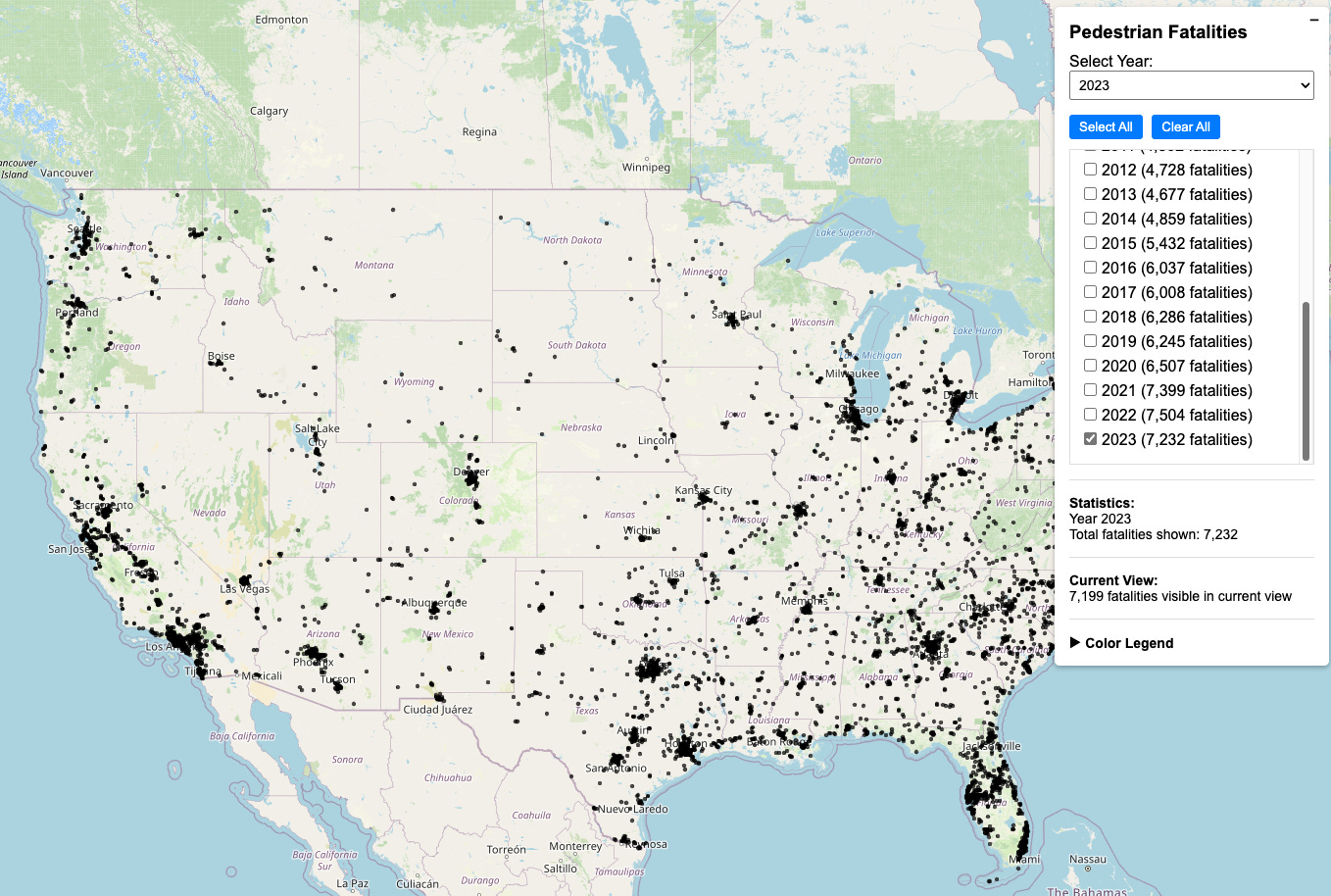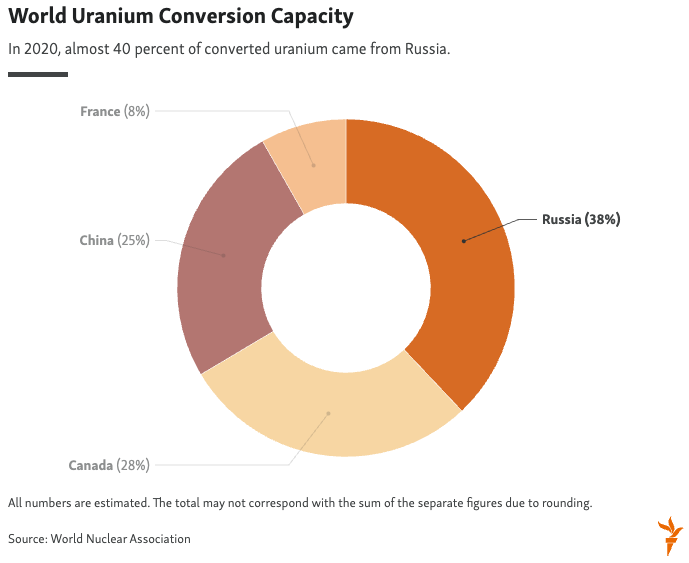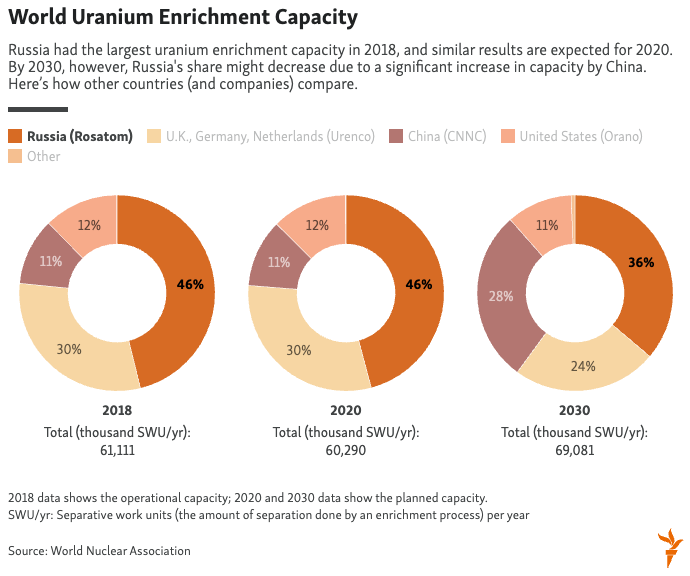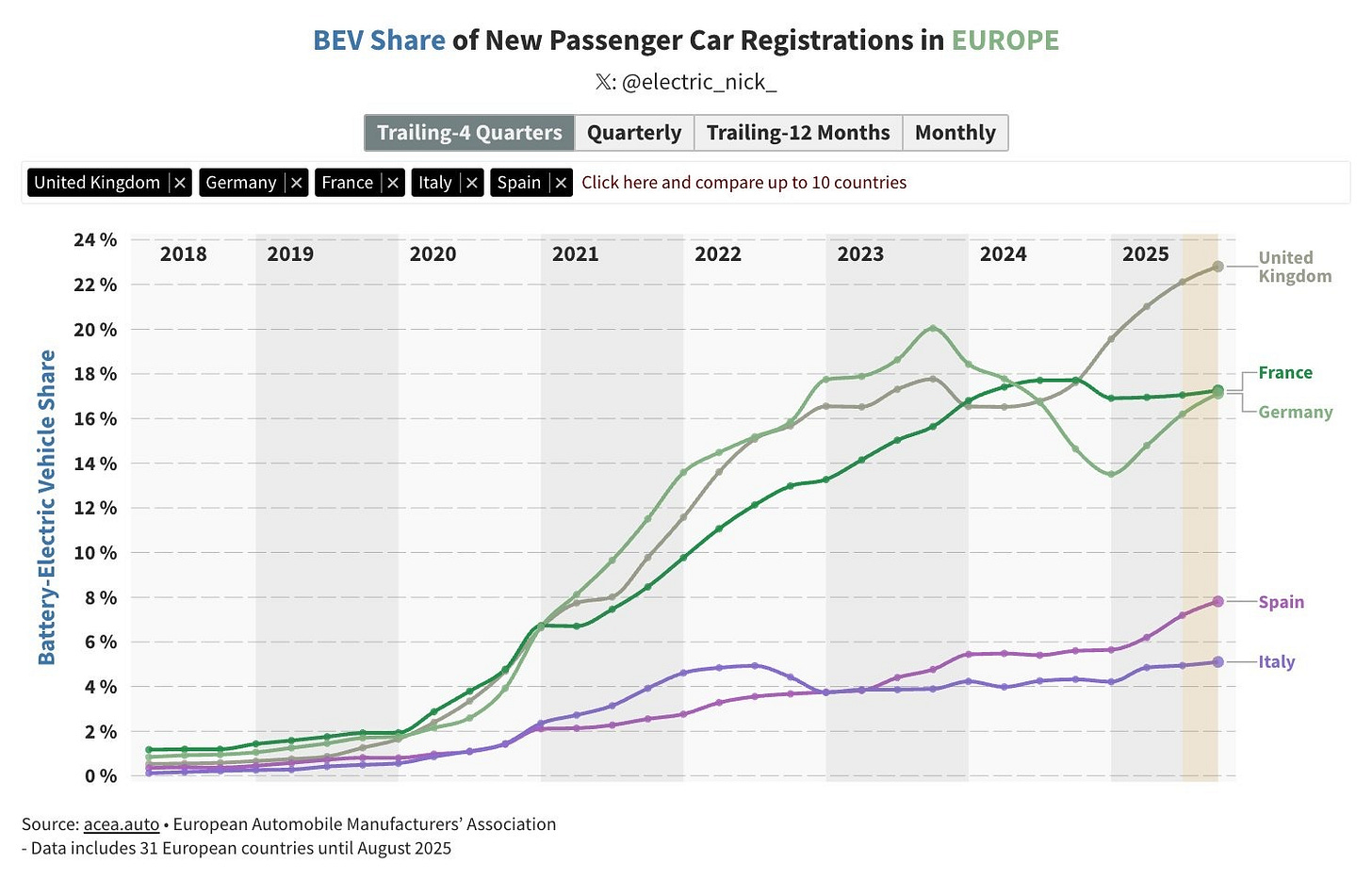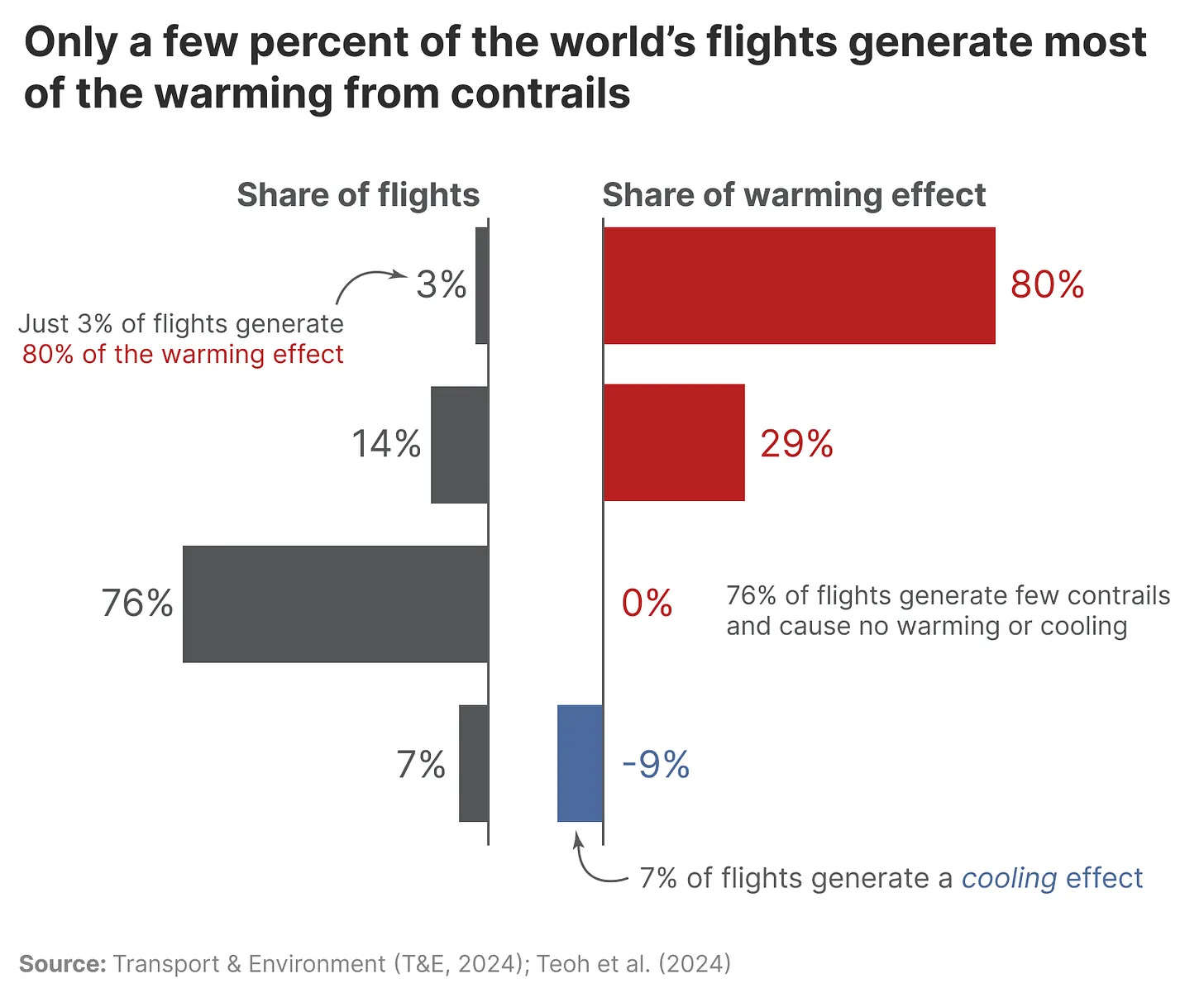Reading List 10/11/2025
Russia’s role in nuclear fuel production, aircraft contrails, homes collapsing in North Carolina, Konrad Zuse’s Helix Tower, and more.
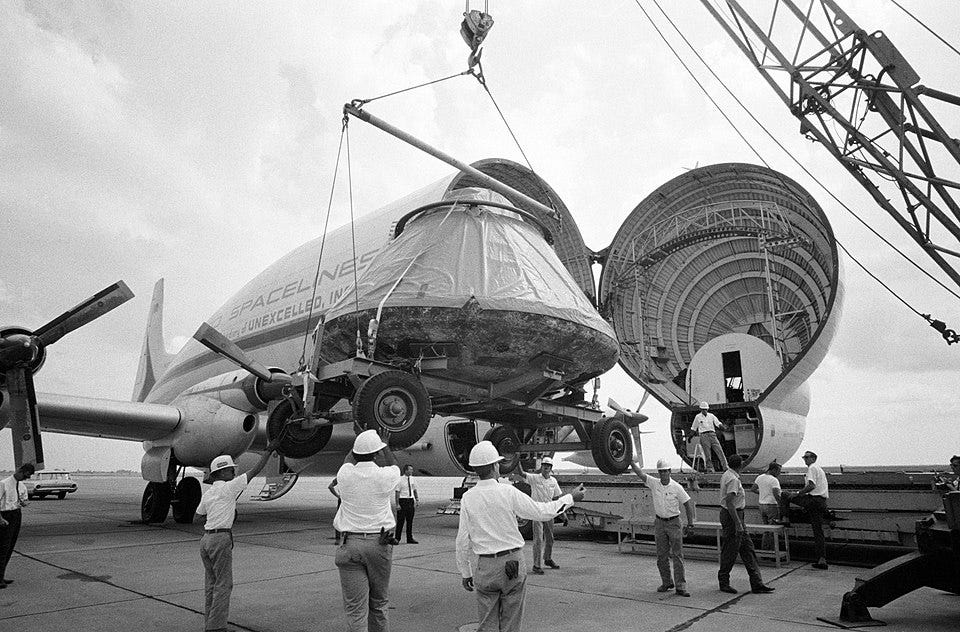
Welcome to the reading list, a weekly roundup of news and links related to buildings, infrastructure, and industrial technology. This week we look at Russia’s role in nuclear fuel production, aircraft contrails, homes collapsing in North Carolina, Konrad Zuse’s Helix Tower, and more. Roughly 2/3rds of the reading list is paywalled, so for full access become a paid subscriber.
Housekeeping items:
Folks had lots of suggestions on potential causes of the uptick in US pedestrian deaths. I’m working on a follow-up piece that looks at what I think are the most promising ones that should be out next week.
Friend of the newsletter Tyler Pullen is hiring a full-time AEC researcher at UC Berkeley’s Terner Center for Housing Innovation. The job posting is here.
Pedestrian deaths map
When I was looking into NHTSA pedestrian deaths data, I vibe-coded a simple HTML map showing the exact location of each death, from 2001 (the earliest that location data was generally available) through 2023. I’ve made that map available on github here.
Russia and the nuclear supply chain
Concern about global demand for Russian energy resources usually focuses on Russian natural gas. But apparently Russia is also a major supplier of nuclear fuel: while most raw uranium ore is mined elsewhere, Russia is the largest producer of uranium hexafluoride gas (which uranium ore is converted into prior to enrichment), and the largest producer of enriched uranium (uranium with a higher fraction of fissile U235, making it suitable as a nuclear fuel). Via Radio Free Europe Radio Liberty:
…uranium mining is just one piece of the nuclear process. Raw uranium is not suitable as fuel for nuclear plants. It needs to be refined into uranium concentrate, converted into gas, and then enriched. And this is where Russia excels.
In 2020, there were just four conversion plants operating commercially -- in Canada, China, France, and Russia. Russia was the largest player, with almost 40 percent of the total uranium conversion infrastructure in the world, and therefore produced the largest share of uranium in gaseous form (called uranium hexafluoride).
Also on the subject of supplying nuclear fuel, CNBC has an article about the only operating US uranium enrichment facility:
Headquartered outside London, Urenco is joinly owned by the British and Dutch goverments and two German utilities. Its New Mexico facility is the only commercial enrichment facility left in the U.S. The last U.S.-owned commercial facility in Paducah, Kentucky, closed in 2013 and its owner the United States Enrichment Corporation went bankrupt during the downturn after Fukushima.
Fourteen years later, the situation has reversed once again. Urenco USA is racing to expand its enrichment capacity. The nuclear industry is gaining momentum as electricity demand in the U.S. is projected to surge from artificial intelligence and the push to expand domestic manufacturing. Doubts persist about whether U.S. power supplies will ramp up quick enough to meet the needs. Increasing uranium enrichment will be a key part of the process, despite the history of past disappointments.
Also, U.S. enriched uranium supplies are at risk. The U.S. still imported 20% of its enriched uranium from Russia in 2024
UK EVs
Chinese EV juggernaut BYD is gaining ground all over the world, including (perhaps surprisingly) in the UK. Via the BBC:
Chinese car making giant BYD says the UK has become its biggest market outside China, after its sales there surged by 880% in September compared to a year earlier.
The company says it sold 11,271 cars in the UK last month, with the plug-in hybrid version of its Seal U sports utility vehicle (SUV) accounting for the majority of those sales.
It comes after figures from the car industry body the Society of Motor Manufacturers and Traders (SMMT) showed that sales of electric vehicles (EVs) jumped to a record high in September.
The UK is particularly attractive to firms like BYD as the country has not imposed tariffs on Chinese EVs, unlike other major markets such as the European Union and the US.
BYD, which offers cheaper models than many of its Western rivals, said its share of the UK market jumped to 3.6% in September.
The UK is apparently BYD’s largest market outside of China. Related, the UK also seems to be adopting EVs faster than other European countries. Via Electric Nick:
Aircraft contrails
This week I learned that aircraft contrails (short for “condensation trails”) are basically clouds that form from the soot and water vapor exhaust of a jet engine when the aircraft flies through cold, humid air. Because contrails serve to trap reflected solar radiation, they contribute to global warming. But their impact could be greatly reduced by rerouting the very small percent of flights that are likely to form contrails. Via Sustainability by the Numbers:
One crucial reason why eliminating contrails could be so cost-effective is that a very small percentage of flights create the majority of the impact. This means we don’t need to divert or shift the trajectory of all the world’s flights; only a few percent of them.
In the chart below, you can see the breakdown of the warming effect across the world’s flights.4 On the left-hand side, we have the share of flights, and on the right, their collective contribution to the total warming impact of contrails.
Just 3% of flights generate 80% of the warming. A further 14% generate 29%.
You might notice that this sums to 109%. But this is because some flights generate a cooling effect of 9%. Put them together and we get 100%.
Most flights — three-quarters of them — barely generate contrails at all and cause no warming or cooling.


